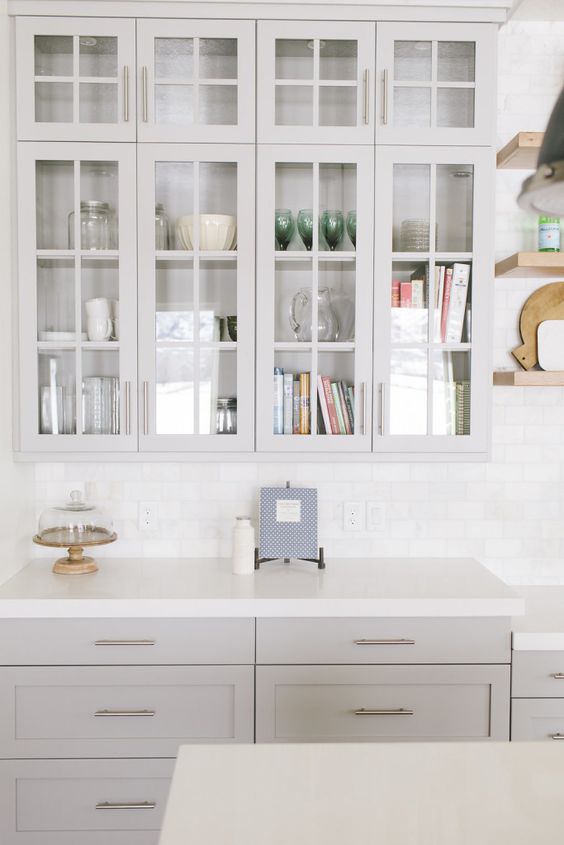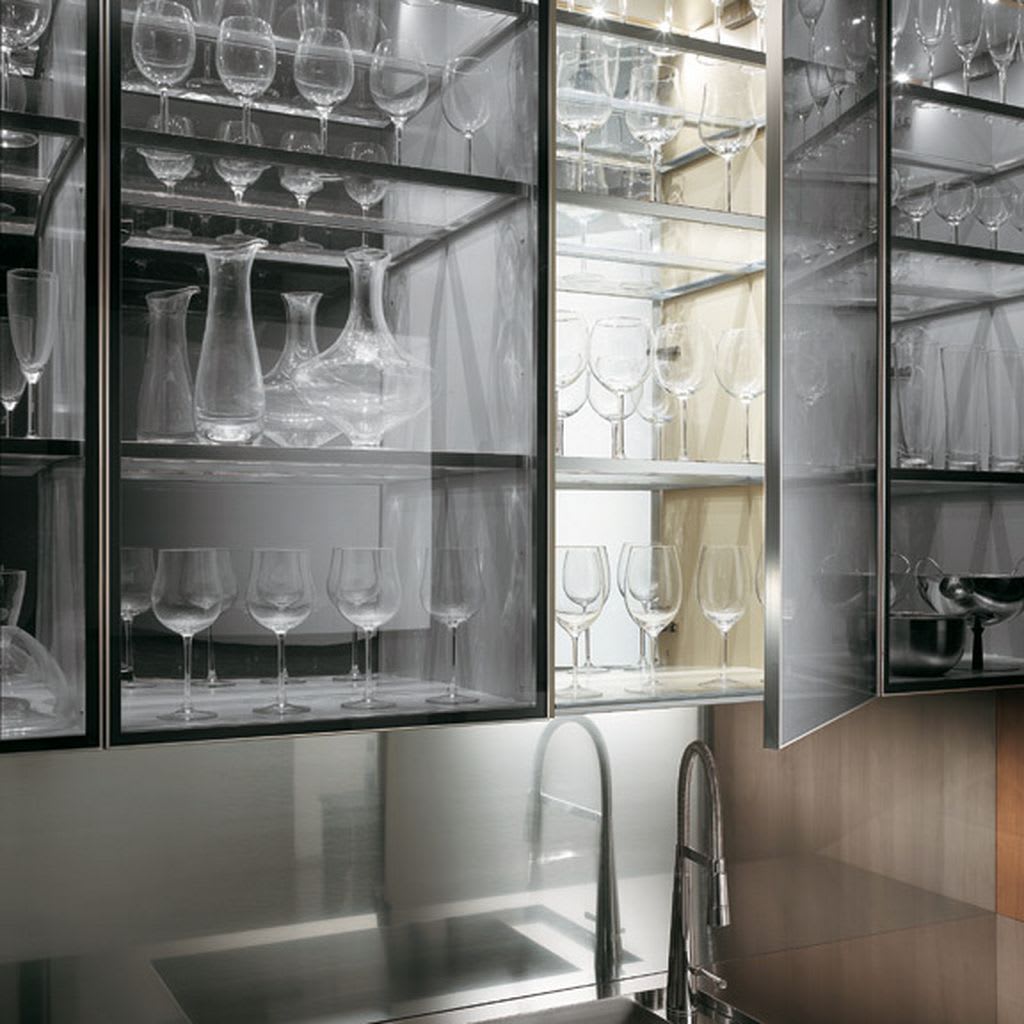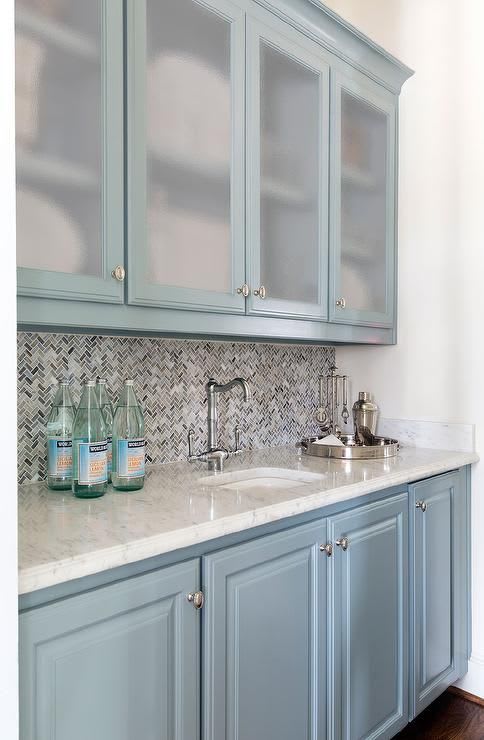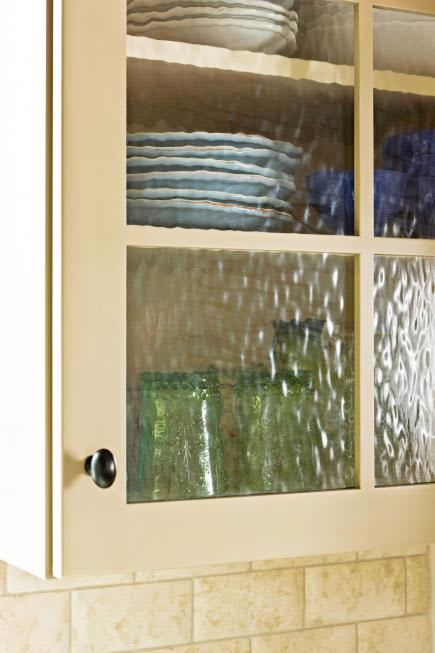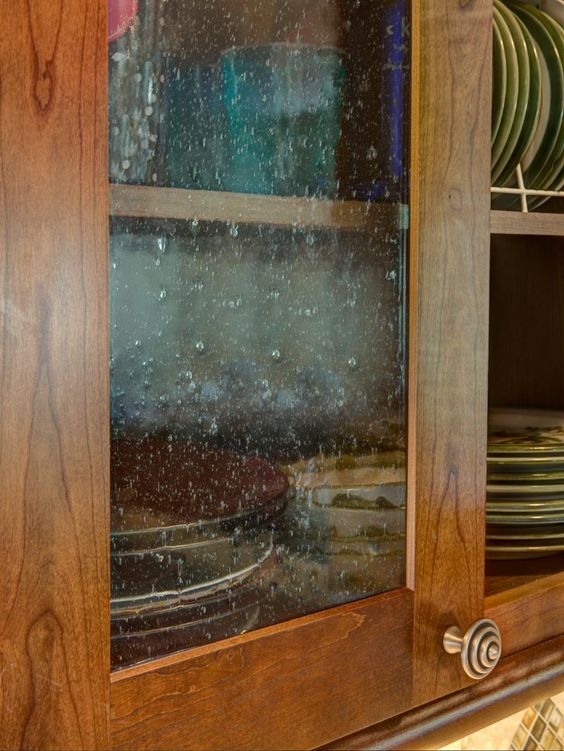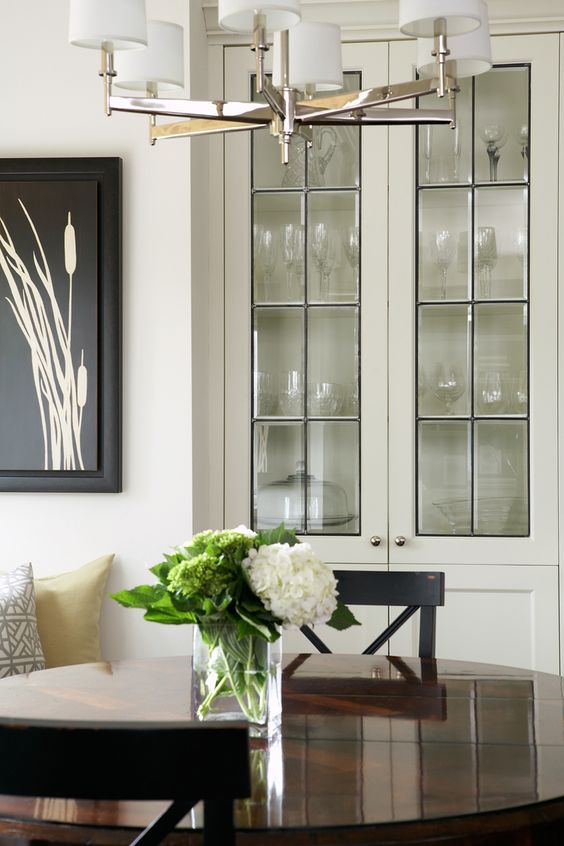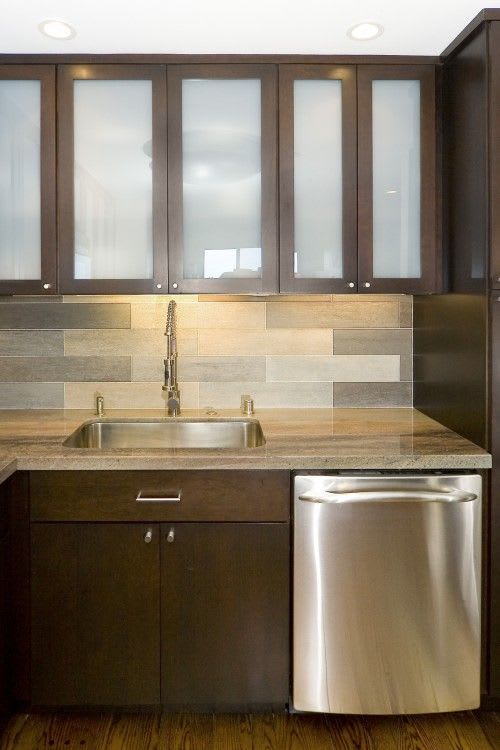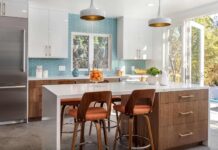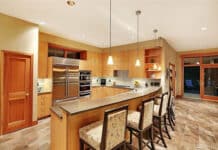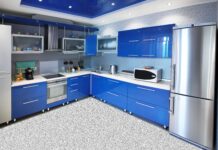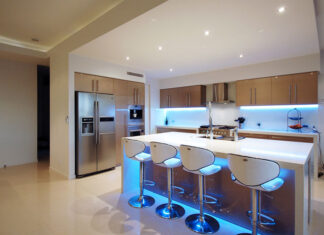Open your kitchen visually by ditching the solid cabinetry that has previously contributed to a somewhat claustrophobic feeling. Replace their center panels with glass. You will notice a pleasing difference immediately.
Brighten Your Kitchen By Adding Glass to Your Cabinets
It’s easy and, best of all, there are a ton of styles to choose from. Glass inserts are available in an abundant variety of styles filled with unique textures and finishing techniques.
Naturally, you can’t go wrong with classic transparent glass. It’s a standard. Since it’s the most widely available it is also the most generally affordable. A tempered style is best, as it is least likely to crack.
Large single flat panes look great, as do the decorative mullions that divide the glass into paneled sections. Be aware that whatever is on the shelf behind the glass will be completely visible.
Whatever is there will need to be maintained, or at least neatly displayed.
The modern kitchen typically boasts frosted glass panes. A sand-blasted surface gives the specialty glass a unique translucent quality which in turn lends a cool look to the space. It actually screens the objects it shields, so whatever is behind it is not entirely visible (this works well for the mess-inclined).
It’s not entirely opaque so you’ll still want to use discretion for the shelf as far as disarray etc… Frosted glass may even feature etched designs (custom or prefab) that can add an additional touch of the exquisite.
For a well-formed look that reminds one of a 1960’s view of the future, textured glass can be very appealing. Available in a variety of patterns such as pebbled, ribbed, grooved, and beveled, textured glass is certain to deliver visual or tactile charm.
Some argue that the unique patterns are prone to be prematurely outdated, but most consumers base their choice on their level of gravitation toward it, not on what they speculate will be en vogue in years to come.
Seeded glass, dating back to colonial times, is a true vintage. Its wavy surface encloses countless fixed tiny bubbles. The size of these air pockets varies per piece, so look for consistency.
Also, remember that the smaller bubbles are better suited for showcasing what’s in the cabinet. The style works well with shaker and traditional kitchens, thanks to its hand-crafted look and old-fashioned influence.
For a traditional feel with a touch of elegance, leaded glass may be perfect. There’s a certain artisanal quality to it, and you can alter the design to fit several motifs, such as Gothic or Craftsman. You may even use it for more dramatic effect by adding a hint of color, or go as far as choosing stained or art glass.
These are wonderful choices, particularly for use with backlit cabinetry, where a dazzling array of color shades may shimmer.
Interestingly, you can find authentic antique leaded glass panels at salvage shops, flea markets and online. It’s not uncommon to hunt for a variety of compatible vintage panels for use in cabinets, and the search is fun.
{Picture reference to Houzz}
These are just several of the most popular glass types. You may also look for opaque glass, milk glass, or blue milk glass.
Naturally, any glass requires its share of maintenance, but since the cabinet panels are not typically touched, they are not likely to get smeared or smudged. Of minor, though appreciated relief, you just need to dust-clean them every few months, and they’ll look great.
The world of glass – and glass art – is a wide one. There is much to learn, appreciate and enjoy. Incorporating glass into your kitchen is a great way to bring these sophisticated and ornamental elements into your home.

